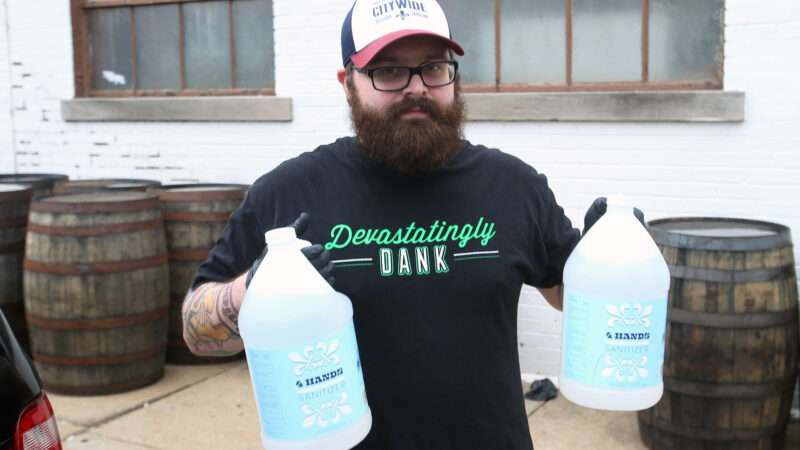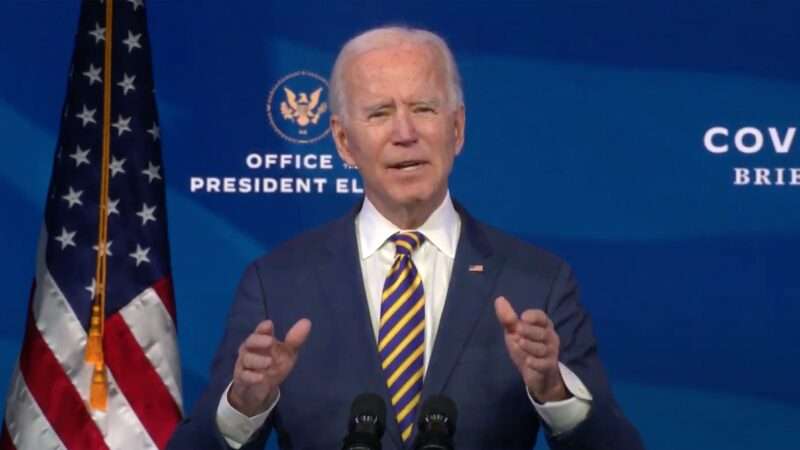For many American craft distillers, 2020 was already one of their worst years ever. The COVID-19-related closure of tasting rooms and cocktail bars, loss of tourism, and inability to offer in-store sampling slashed their sales revenue and cut them off from their customers. Then this week, just as it seemed they’d made it through the worst of a terrible year, the Food and Drug Administration (FDA) had one more surprise in store: The agency delivered notice to distilleries that had produced hand sanitizer in the early days of the pandemic that they now owe an unexpected fee to the government of more than $14,000.
“I was in literal disbelief when I read it yesterday,” says Aaron Bergh, president and distiller at Calwise Spirits in Paso Robles, California. “I had to confirm with my attorney this morning that it’s true.” The surprise fee caught distillers completely off guard, throwing the already suffering industry into confusion.
When the onset of the pandemic led to a massive increase in demand for hand sanitizer this spring, many distilleries stepped up to alleviate the sudden shortage. The main ingredient in sanitizer is ethanol, which they are in the business of making, albeit typically in more fun and tasty formats. More than 800 distilleries pivoted from spirits to sanitizer, offering it for sale or in many cases donating it to their communities free of charge. Their prompt action helped ensure supplies of sanitizer when it was otherwise unobtainable.
(Even then, the FDA needlessly complicated things, imposing additional requirements on top of guidelines published by the World Health Organization for emergency production. The FDA’s mandate that all alcohol used in sanitizer first be denatured—rendering it undrinkable—created a bottleneck that raised costs for distillers and slowed production.)
Producing sanitizer is viewed as a point of pride in the distilling business, a way that they were able to help their communities in a fearful time of crisis.
Now, however, that good deed is being punished with unanticipated fees by the FDA. “I compare it to surprise medical billing,” says Becky Harris, president of the American Craft Spirits Association (ACSA) and of Catoctin Creek Distilling in Purcellville, Virginia.
At issue is a provision of the CARES Act that reformed regulation of non-prescription drugs. Under the revised law, distilleries that produced sanitizer have been classified as “over-the-counter drug monograph facilities.” The CARES Act also enacted user fees on these facilities to fund the FDA’s regulatory activities. For small distillers, that means ending the year with a surprise bill for $14,060 due on February 11.
“People are incredibly anxious,” Harris says. “We have been dealing with tons of phone calls talking to individual members and state guilds to tell them what we know and what we don’t know.”
Harris and the ACSA have spent the day trying to learn more details about the law and the FDA’s intentions, but the combination of the holidays and the pandemic makes this a difficult time to reach anyone. “We recognize that this bill [the CARES ACT] was not written specifically for the issue of sanitizer,” Harris says. “The problem that we have right now is that [the fee assessment] is going out to a whole lot of small businesses who are struggling in the pandemic.”
Bergh’s CalWise Spirits is a typical example. He says that his distillery produced 5,000 gallons of hand sanitizer, with distribution prioritized to medical workers and others on the frontlines of the pandemic response. “Some of my hand sanitizer was donated,” he said in a statement today. “The rest was sold at a fraction of the market price. My goal was to get as much out as I could, at as low of a price as I could, while being able to bring my furloughed employees back to work. The hand sanitizer business saved me from bankruptcy – but I didn’t make an enormous profit.”
Potentially compounding the impact of the fee is that it is determined by registration as an OTC (over-the-counter) monograph drug production facility in the previous calendar year. That means that distilleries not only have to contend with this year’s fee; if they fail to update their status with the FDA by tomorrow, they may be liable for an additional fee in 2022 as well.
For now, Harris is advising members not to pay the fee right away. “We want to push back on this,” she says. She’s hopeful that if the FDA has some discretion as to the applicability of the fee, that they will exercise it to exclude distilleries, most of which no longer produce sanitizer and have no intention of continuing to do so now that the emergency shortage has passed. Currently, however, the FDA’s website explicitly notes that facilities that produced sanitizer under the agency’s temporary COVID-19 policy are not exempt. Reason‘s inquiry with the FDA has yet to receive a detailed response, but we will update if we receive one.
Paying a surprise $14,000 bill would be a challenge for small businesses in any year, but it’s a particular challenge for craft distilleries in 2020. An industry survey conducted earlier this year by the Distilled Spirits Council of the United States and the American Distilling Institute projected that sales revenue at craft distilleries would decline by more than $700 million this year, amounting to approximately 40 percent of their sales.
For many distillers, the unexpected fee assessment from the FDA thus arrives as one more substantial blow in an already devastating year. “If you were making sanitizer for your community at a limited capacity, this should not be something you have to deal with,” says Harris. “It will be a slap in the face to make it through all of this and then get hit with this bill.”
from Latest – Reason.com https://ift.tt/34Z7onB
via IFTTT

